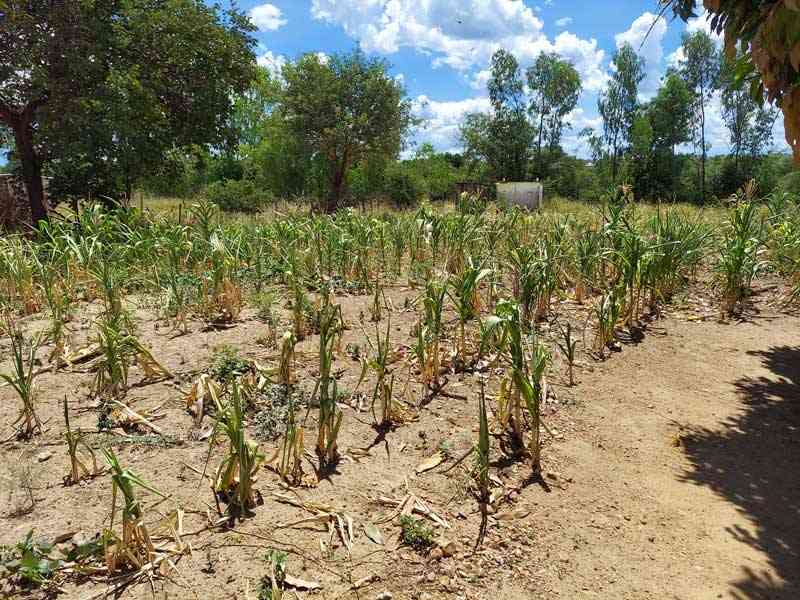
IT was World Water Day on 22 March and this year’s event was celebrated under the theme, Water for Peace.
Just like most international days, World Water Day is observed every year under various themes highlighting the importance of fresh water and advocating the sustainable management of freshwater resources.
There was a time when these days used to be just events on the global calendar, but the unfolding impact of the climate crisis is reminding the world that Water Day is no longer just any other event but an important one.
A combination of climate change and a spike in population growth is driving earth’s freshwater decline and threatening the health and livelihoods of millions of people.
Extraordinary population growth, commercial use and changing consumption patterns are putting pressure on the world’s water supply systems.
Wastewater, mainly in the agricultural and manufacturing sectors, is also contributing to water scarcity.
On the climate change front, recent studies show that with 2°C global warming thus far, up to three billion people are projected to experience chronic water scarcity at least one month a year.
Given the intensity of the climate change crisis, it is projected that by as early as next year, two-thirds of the world’s population may be facing water shortages.
- COP26 a washout? Don’t lose hope – here’s why
- Out & about: Bright sheds light on Vic Falls Carnival
- COP26 a washout? Don’t lose hope – here’s why
- Out & about: Bright sheds light on Vic Falls Carnival
Keep Reading
Water insecurity is already impacting human health in many ways including displacement, poverty, disease and food insecurity. Urgent political action is needed sooner rather than later before the situation poses a threat to human life. When waters run dry, people can not get enough to drink, wash, or feed crops, and economic decline may occur. In addition, inadequate sanitation, a problem for 2,4 billion people, can lead to deadly diarrheal diseases, including cholera, typhoid fever and other water-borne illnesses.
When this happens, migration and population movement are invertible. The million-dollar question is migrating to where? In some countries in South Asia, whole villages have been deserted as traditional sources of water such as rivers, natural dams, springs, mountain snow, and others have dried up. People have moved to other villages where water is accessible while others abandoned their countries and crossed borders for greener pastures.
At the bottom of it all, water is life. It is needed for domestic use, the sustenance of livelihoods, and economic use. Once it dries up, no one can hope that it will return which is why issues of climate change and their impact on water and livelihoods have to be taken seriously. If people can desert their land, which is supposed to be one of their birthrights, then that should be a sign that the world is headed toward dark ages.
Droughts and their intensity are increasing each year compounding seasonal water scarcity in regions where it used to be abundant and worsening in regions where water is already in short supply, such as the Sahara in Africa. Water scarcity is further complicated by the massive amounts needed for agriculture and food production. More than 70% of freshwater globally goes to agriculture, and about one-third of the world's cities already compete with agriculture for water. Competition will only increase as the urban demand for water is predicted to grow by 80 per cent within the next three decades.
The question therefore is what will countries in Africa do to adjust to this fast-emerging reality? Several major rivers in southern Africa are spewing freshwater into oceans with no or limited use for domestic or commercial use. This is partly because most of the rivers are held up in border issues — a colonial legacy current governments are afraid to address. With the climate crisis increasing the frequency and intensity of droughts, it may be time for conversations on how to make use of this water to address food security and commercial use.
Without these conversations, the world is going to see more tensions and conflicts unless governments, mainly in southern Africa, start managing the process of either diverting water from major rivers or facilitating people’s relocation to areas with sustainable fresh water as well as economic growth to the same areas. Allowing such processes to occur organically, is creating a breeding ground for conflicts.
In any case, the movement of people to available surface water sources will be unavoidable in the next few decades, mainly those whose livelihoods are based on access to water. This is because tapping into surface water may be less expensive for most people than extracting groundwater but can be a cause of conflict which is why the theme for this year’s water day pays attention to that dimension.
Without efforts that take into account these demographic factors and the effects of climate change, the number of people facing water scarcity is expected to double to somewhere between 1,7 billion and 2,4 billion across the world, while the number of water-related conflicts will also rise. Perhaps, it is high time to think beyond the Matabeleland Zambezi Water Project and expand the idea to other areas of the country. If the skies can no longer provide enough water to sustain agriculture, it may be time to use what we have.
- Tapiwa Gomo is a development consultant based in Pretoria, South Africa. He writes here in his personal capacity.






